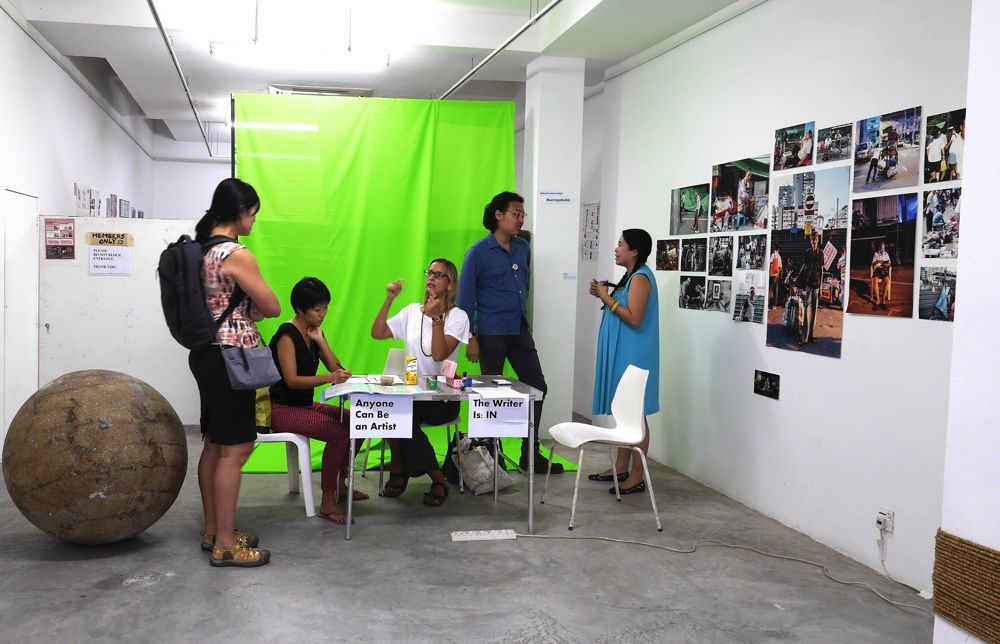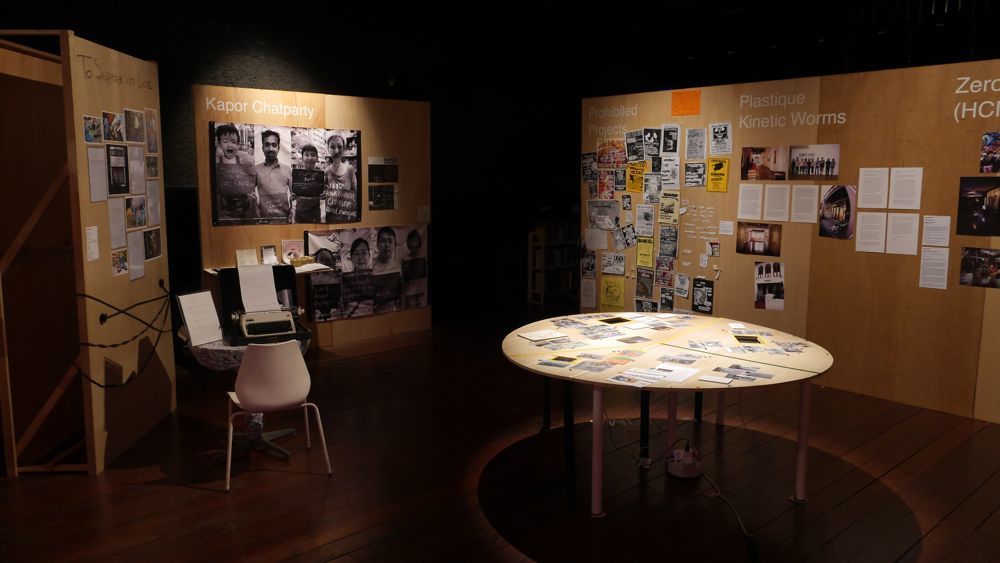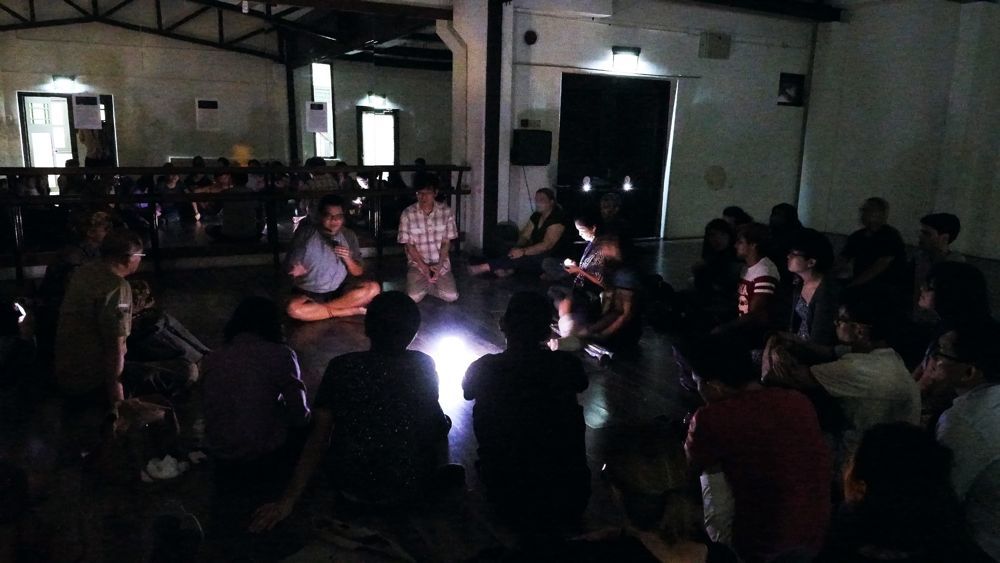“Dream Works” by Clara Chow in front of “Green Screen” by Atelier Rakyat as part of “Survey: Space, Sharing, Haunting.” 2016. All images courtesy Post-Museum
Text by Qinyi Lim
The Substation occupies an important position within Singapore’s local art scene as it was the first independent contemporary art institution to foster experimental practices. In an international context, the Substation has produced various key performances and happenings that shaped the island state’s history of art, to include Amanda Heng’s Let’s Chat (1996), Tan Kok Meng & Ling Hao’s Homescapes (1999) to Lim Tzay Chuen’s Space Alternation #7 (2001). Founded in 1990 by Kuo Pao Kun (1939–2002), the Substation operated with an openness in light of the nation’s lack of exhibition spaces and in response to tightening of state control within the region’s creative landscape.
26 years later, Singapore’s exigencies have shifted: the burgeoning professionalization of art workers and artistic production, driven by the state’s transformation into a first world country, has come at the expense of nurturing an organic and diverse ecology of artists, independent curators, writers, and even institutions. The Substation and other independent spaces have been challenged by this forced professionalization, exacted by governmental requirements, such as needing a license to present public exhibitions and events based on the content of the exhibition. An immunity to the latter is granted to commercial galleries under the pretext of sales.
Exhibition view of Production of Spaces by art collectives and civil society initiatives as part of “Survey: Space, Sharing, Haunting.” 2016
Against this backdrop, Substation’s new artistic director Alan Oei has proposed a change of direction in the institution’s programming, promoting more condensed research-based multidisciplinary programming and doing away with the affordable mixed-use rental system, which has been met with outrage from the greater community. Seen as an act of violence, the rift between the Substation and the communities it once served was driven deeper and the rental scheme put back in place after a series of tense town hall meetings. Matters further deteriorated during the pre-opening days of a three-part program in which the local art collective Post-Museum were invited to take over Substation, occupy the entire first floor of the building and create a series of programs under the banner of Survey: Space, Sharing, Haunting that examines and reflects upon the state of arts and culture in Singapore.
A revelatory public post on Oei’s personal Facebook account made clear that the collaboration was experiencing some growing pains as Oei made pronouncements about how he doesn’t believe there’s any such thing as a community. “Maybe there’s a far bigger price to pay when we put in rules to stop a few who damage our space,” Oei writes in his Facebook post. “Maybe the price is the very loss of what we claim to stand for: openness and plurality, most of all, arts community. It cuts both ways.” This sentiment was met with frustration in Singapore’s art community, and many artists wondered whether this statement was indicative of how the Substation had lost touch with its community. On the other hand, one could also say this tension highlights how the artist community has only come to engage with the Substation on a purely transactional basis.
Ghost Story Campfire Night I, moderated by Wong Chee Meng as part of “Survey: Space, Sharing, Haunting.” 2016.
At a time in which funding for the arts in Singapore seems both bountiful and impoverished by a lack of non-governmental funding sources as well as instrumentalized by the language of progress, what can be done to build a community—one that now sees no need or urgency to engage with anyone but the artist and the mode of production? Can there be another envisioning of an institution that serves to fill in the tenuous links between art workers and their respective roles?
Qinyi Lim is an independent curator and writer based in Singapore. She previously held curatorial positions at Para Site, Hong Kong; National University of Singapore Museum and the Singapore Art Museum. Lim completed the de Appel Curatorial Programme in 2012. Recent and past projects include The Outlier | Xyza Cruz Bacani, Arrow Factory, Beijing; Orchestrations | Samson Young (Para Site, Hong Kong ) and A Luxury We Cannot Afford (Para Site, Hong Kong)


